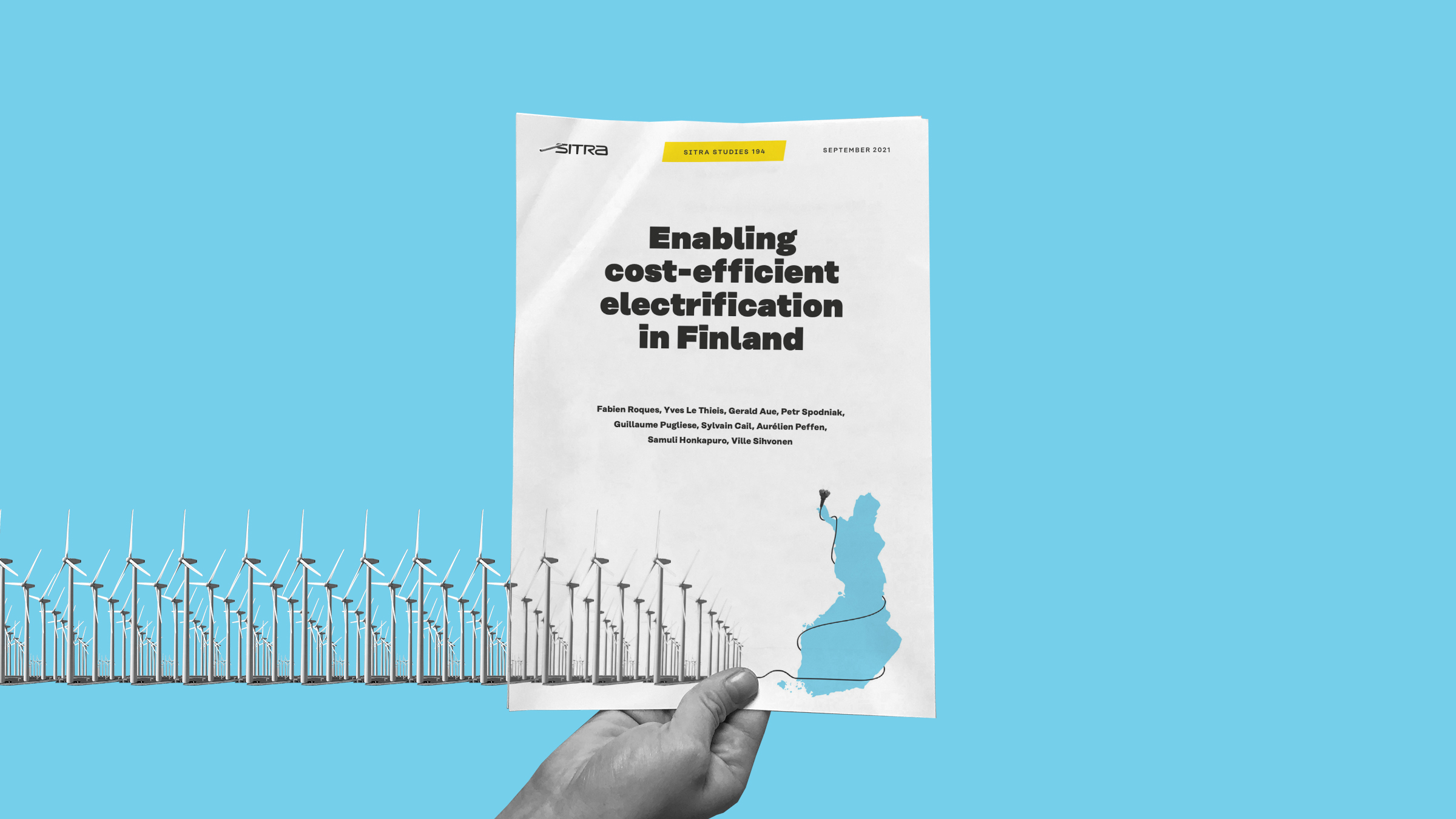Previous Finnish energy system studies have highlighted the importance of electrifying energy use to achieve deep decarbonisation. Broadly speaking, the recipe for major emissions reductions is that first, electricity production needs to become carbon free, after which we should electrify operations in society and the economy in the order that is most efficient in terms of cost, energy, and resources.
The aim of this study is to supplement and clarify the outlook for the future of the Finnish energy system by providing a holistic view of electrification and decarbonisation in Finland. The starting point is that carbon neutrality should be reached by 2035 and full decarbonisation by 2050. We have also sought to identify key enablers and pain points for the transition and to provide recommendations for the way forward.
The results show that, from an energy system perspective, achieving Finland’s climate targets is possible, but it requires replacing fossil fuels with clean electricity for industry, transport and heating. Hydrogen and biomass, such as wood, can be used in applications where emissions cannot be abated through electrification. Electricity demand is estimated to double by 2050. The study finds that the most cost-efficient source of zero-emission energy in Finland would be onshore wind, strongly supported by supply and demand side flexibility sources. These will need to be complemented with electricity storage, such as batteries and hydrogen, and the power transmission network will require strengthening.
The study demonstrates that the transition to a decarbonised energy system can be achieved. Yet, the cost efficiency of the transition is in the hands of our policy makers: to succeed in electrifying our energy system, proper frameworks need to be put in place. We need a clear vision for the future, sufficient incentives for electrification, and support for developing and adopting new technologies.


















Recommended
Have some more.